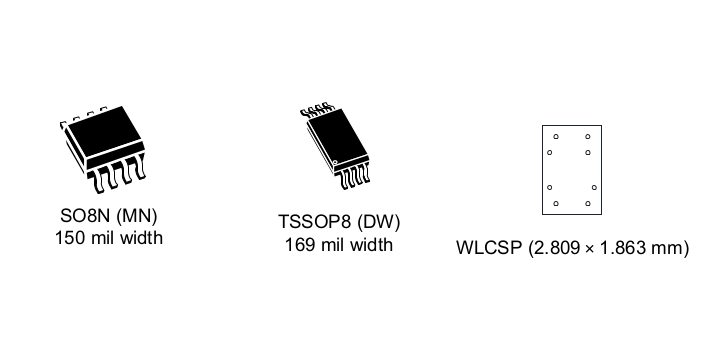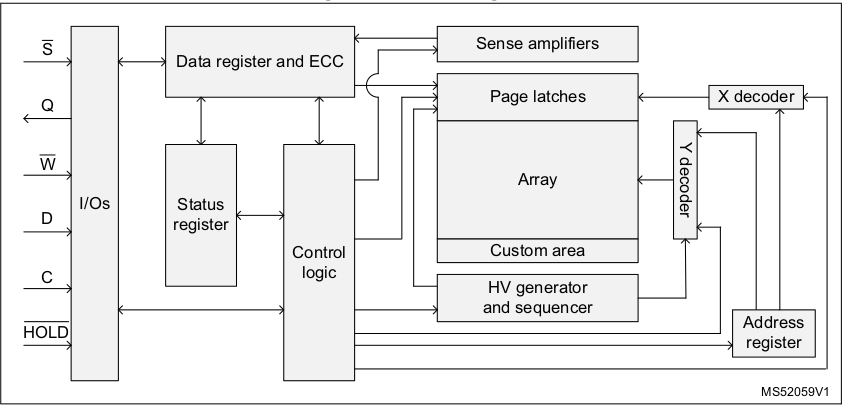EEPROM chips are often used to store configuration information and connected over I2C. But there are also SPI EEPROM, and STMicro has just announced one of the largest ones with M95M04-DR 4-Mbit serial SPI EEPROM.
M95M04-DR key features:
- Capacity – 4 Mbit (512 Kbytes) of EEPROM with 512 bytes page size and additional write lockable page (Identification page)
- Host Interface – Serial peripheral interface (SPI) bus
- Write time – Byte Write within 5 ms, Page Write within 5 ms
- Write protect – Quarter array, half array, and whole memory array
- More than 4 million Write cycles
- More than 40-year data retention
- Max clock frequency – 10 MHz
- Single supply voltage: 1.8 V to 5.5 V
- Temperature range – -40°C to +85°C
- Enhanced ESD protection (up to 4 kV in human body model)
- Packages – SO8N, TSSOP8, and WLCSP
 The company explains their latest high-capacity EEPROM enables equipment such as smart meters to intensify data logging for managing grids more effectively and providing more user-friendly billing. The SPI EEPROM will also be used in portable medical devices, smart wearables, industrial controls, and network switches. Some of the benefits of this type of memory are its low power consumption that helps extend battery life, wider supply voltage range, as well as its relative cost-effectiveness.
The company explains their latest high-capacity EEPROM enables equipment such as smart meters to intensify data logging for managing grids more effectively and providing more user-friendly billing. The SPI EEPROM will also be used in portable medical devices, smart wearables, industrial controls, and network switches. Some of the benefits of this type of memory are its low power consumption that helps extend battery life, wider supply voltage range, as well as its relative cost-effectiveness.
M95M04-DR samples now are available via NXP sales, and the price is $2.5 for orders of 1,000 pieces. For reference, 4MBit SPI NOR Flash chips sell for less than $1. sometimes around 30 cents. More details may be found on the product page.

Jean-Luc started CNX Software in 2010 as a part-time endeavor, before quitting his job as a software engineering manager, and starting to write daily news, and reviews full time later in 2011.
Support CNX Software! Donate via cryptocurrencies, become a Patron on Patreon, or purchase goods on Amazon or Aliexpress. We also use affiliate links in articles to earn commissions if you make a purchase after clicking on those links.






Would be nice if it was byte-addressable instead of SPI as traditional EEPROM chips tend to be.
What’s the point of making this? There are already spi flash chips that are very fast and larger capacities
Write cycles and low power consumption in my opinion
Data logging/endurance. Most flash memory chips don’t offer “More than 4 million Write cycles”.
Logging the same data set into flash memory once every minute will exceed the stated write endurance in just over 2 months.
There are work arounds such as wear leveling (which complicates software requiring additional code, processing time and memory) or you could spend $1 extra for one of these chips.
In a lot of cases, the ideal solution would be a mixture of flash and EEPROM to suit the nature of the data.
Byte write of 5ms and a page write of 5ms? That sounds much more like it’s faking being EEPROM than actually being an EEPROM.